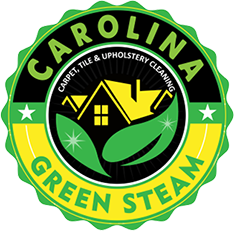You probably have a regular cleaning routine for your home, but are you giving attention to the hidden germ hotspots? Many everyday items we use frequently are often overlooked during cleaning, yet they can harbor dirt, bacteria, and grime. Here’s a list of 10 commonly forgotten items that deserve a spot in your cleaning schedule—and tips to keep them fresh and sanitary.
1. Remote Controls
Think about how many hands touch your TV remote—and how often it gets cleaned. Remote controls can collect bacteria from dirty hands, spills, and even airborne particles.
How to Clean: Use a disinfectant wipe or a microfiber cloth dampened with rubbing alcohol to gently wipe down the surface and buttons.
2. Reusable Shopping Bags
While eco-friendly, reusable bags can pick up bacteria from food, car trunks, and grocery carts. Left uncleaned, they can contaminate your groceries.
How to Clean: Check the care label and wash fabric bags in the washing machine. For plastic-lined bags, wipe them down with a mild disinfectant.
3. Light Switches
Light switches are high-touch areas that accumulate dirt and germs quickly, yet they’re rarely cleaned.
How to Clean: Use a disinfectant wipe or a damp cloth with a little soap to clean the switch and the surrounding plate.
4. Keyboards and Computer Mice
Your hands transfer oils, crumbs, and germs to your keyboard and mouse daily, making them breeding grounds for bacteria.
How to Clean: Use compressed air to remove debris between the keys, then wipe the surface with a cloth lightly dampened with rubbing alcohol.
5. Toothbrush Holders
Toothbrush holders often sit in humid bathrooms, making them perfect environments for mold and bacteria to thrive.
How to Clean: Wash the holder in warm, soapy water weekly and disinfect it with a mild bleach solution or a dishwasher-safe cycle if applicable.
6. Hairbrushes and Combs
Hairbrushes collect hair, oils, and styling products, which can build up over time and reduce their effectiveness.
How to Clean: Remove trapped hair, soak the brush in warm water with a bit of shampoo, and scrub with a toothbrush. Allow it to air dry completely.
7. Water Bottles
Reusable water bottles, especially ones with straws or lids, can harbor bacteria and mold if not cleaned thoroughly.
How to Clean: Disassemble all parts and wash them with hot, soapy water. For hard-to-reach areas, use a bottle brush or soak in a vinegar solution.
8. Cell Phones
Your cell phone is one of the dirtiest items you carry, coming into contact with countless surfaces and your hands all day long.
How to Clean: Use a microfiber cloth and an alcohol-based solution (70% isopropyl) to gently clean the screen and case. Avoid excessive moisture.
9. Kitchen Sponges
Ironically, the tool you use to clean your dishes is likely one of the dirtiest items in your home. Sponges harbor bacteria and can spread germs if not sanitized.
How to Clean: Microwave a damp sponge for 1-2 minutes to kill bacteria, or replace it weekly to ensure hygiene.
10. Curtains and Blinds
Curtains and blinds collect dust, pet dander, and allergens over time, often going unnoticed during regular cleaning.
How to Clean: Vacuum fabric curtains using an upholstery attachment and machine wash if possible. For blinds, wipe each slat with a damp cloth or use a specialized duster.
Tips for Staying on Top of Hidden Dirt
- Create a Cleaning Schedule: Incorporate these items into your routine to prevent buildup.
- Use the Right Tools: Invest in microfiber cloths, disinfectant wipes, and brushes for thorough cleaning.
- Don’t Procrastinate: Regular maintenance takes less time than deep cleaning once dirt accumulates.
By giving these everyday items the attention they need, you’ll create a cleaner, healthier environment for yourself and your family.
Need help tackling the overlooked areas in your home?

